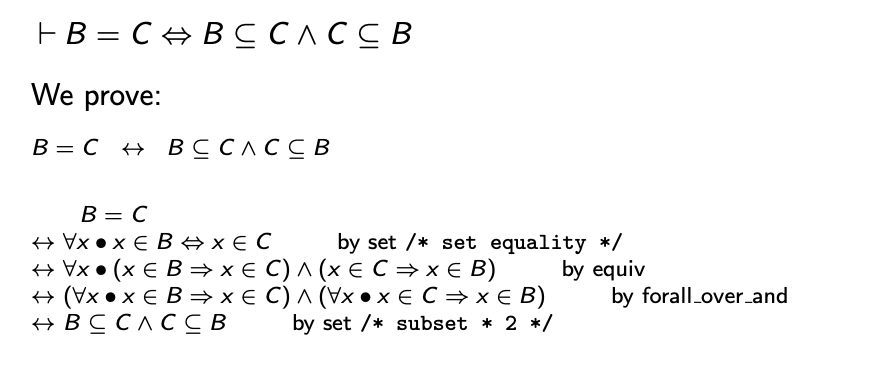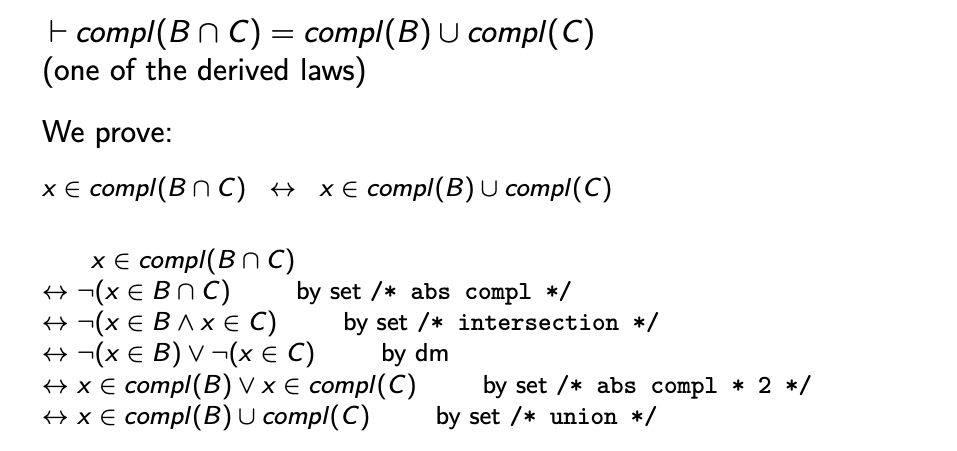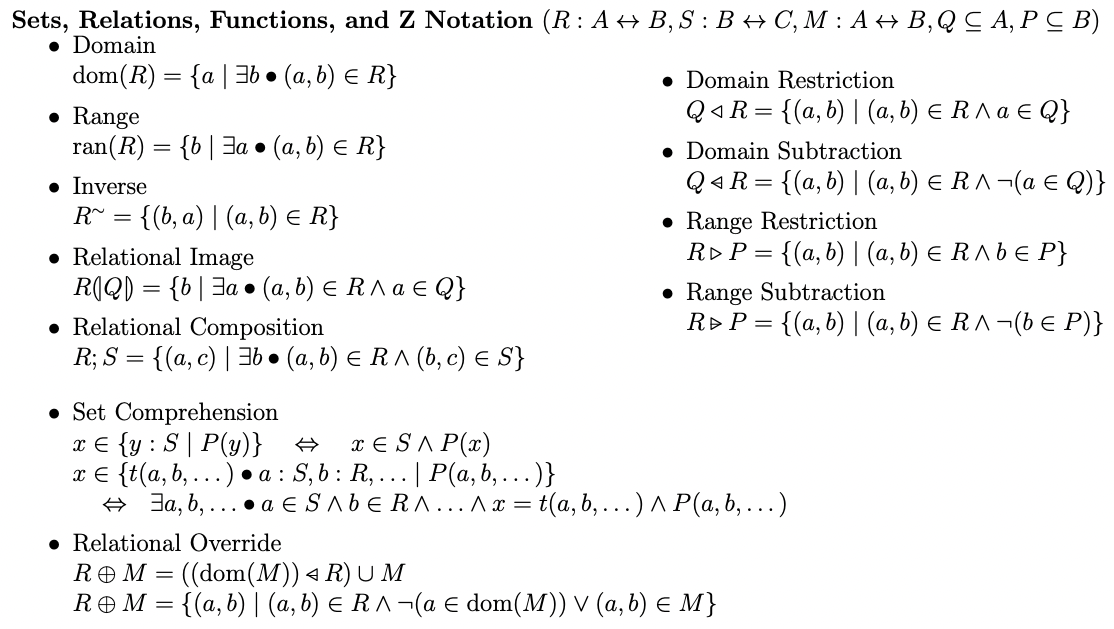Transformational Proof
Transformational proof (↔) proves the equivalence of formulas. It determines that two well-formed formulas of propositional logic, P and Q, are logically equivalent, by transforming into through a sequence of steps that each follow a logical law.
“Transform into to show that and are equivalent”.

Two rules are used implicitly in transformational proofs:
- Rule of substitution: substituting an equivalent formula for a subformula.
- Rule of transitivity: If P ↔ Q and Q ↔ R, then P ↔ R. This rule is what connects the steps of the proof.
For Set Theory
There are three styles to use Transformational Proof in Transformational Proof in Set Theory.
First Style
- To prove , prove

Second Style
- To prove , prove
- We can either transform A = B into (by set // set equality) and proceed from there,
- or directly transform A and B until they are syntactically the same term (and therefore match the axiom A = A in set theory).

Third Style (my preference)
- To prove , prove

I really struggled with this, but I think I am starting to get it.
If you look at your definitions:

Take domain for example, which has the definition You can use it in transformational proof in the following way:
&\leftrightarrow{\exists b \cdot (a,b) \in R}\\ [3pt] \end{aligned}$$ So basically,